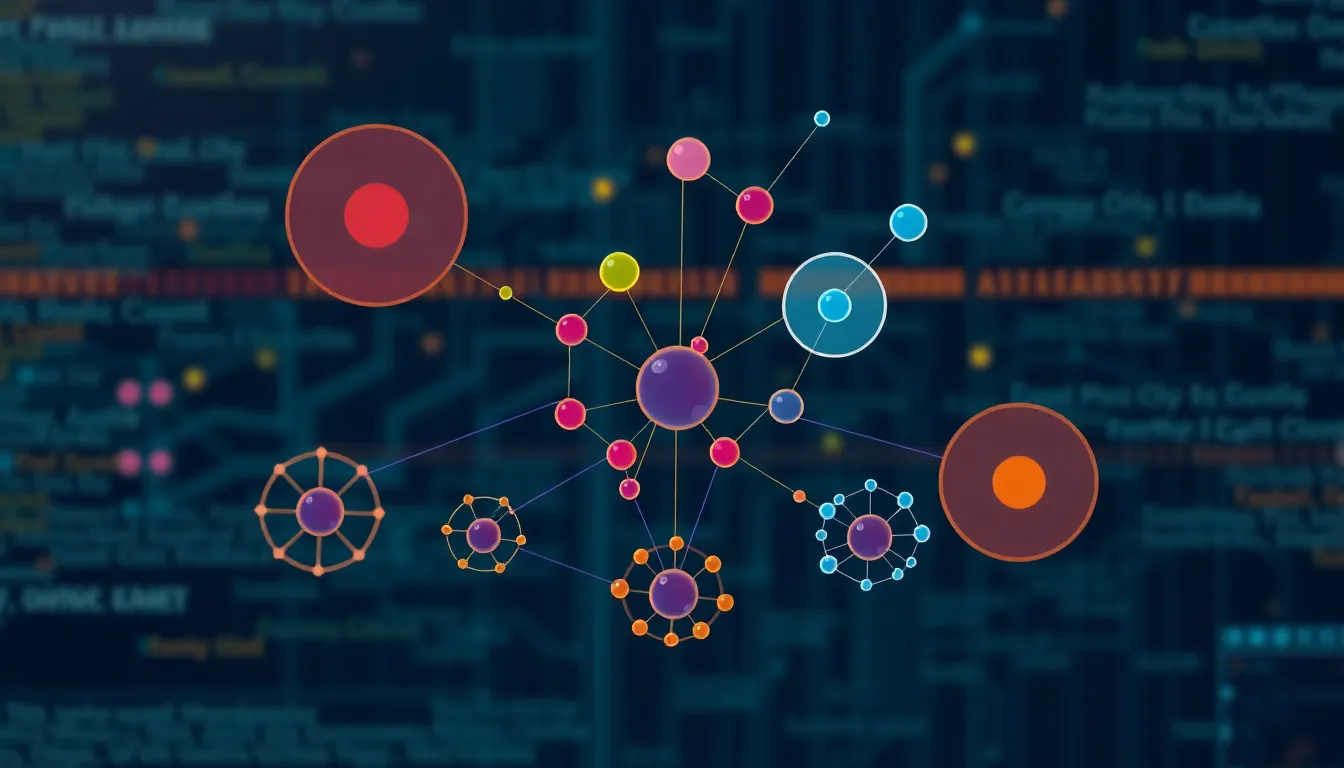In a world overflowing with data, finding meaningful patterns can feel like searching for a needle in a haystack—if that haystack were on fire and full of angry bees. Enter topological data analysis (TDA), the superhero of the data world, swooping in to save the day. TDA uses the principles of topology to help researchers and analysts uncover hidden structures in complex datasets, transforming chaos into clarity.
Topological Data Analysis
Topological Data Analysis (TDA) provides significant insights into complex datasets. It utilizes the concepts of topology to identify and analyze hidden structures within data.
Definition and Key Concepts
TDA focuses on the shape and connectivity of data rather than individual points. Important concepts include persistent homology, which measures features of data across multiple scales, and simplicial complexes, which represent data as a combination of vertices, edges, and higher-dimensional structures. These features capture the essence of data distributions, identifying clusters and gaps. By offering a geometric perspective, TDA enables more comprehensive data interpretation.
Importance in Data Science
TDA’s significance in data science stems from its ability to handle high-dimensional data. Traditional methods often struggle in these scenarios, while TDA excels by revealing essential patterns and relationships. Applications span various fields, including biology, where it assists in analyzing complex biological systems, and finance, where it uncovers market trends. By providing a framework for the analysis of intricate datasets, TDA enhances decision-making and predictive capabilities across industries.
Techniques in Topological Data Analysis

Topological data analysis employs various techniques to harness the shapes and structures hidden in complex datasets. Key methods include persistent homology and the Mapper algorithm.
Persistent Homology
Persistent homology measures features of data across multiple scales. This approach captures topological features such as connected components, holes, and voids. It creates a multi-scale description of data, emphasizing changes in these features as the scale varies. By analyzing simplicial complexes, practitioners identify significant structures that persist throughout different scales. The persistence of features highlights essential patterns and relationships in high-dimensional data. For example, in biological datasets, persistent homology can reveal important insights into the underlying shape of protein structures, which aids in biological interpretation and prediction.
Mapper Algorithm
The Mapper algorithm provides a way to summarize high-dimensional data while preserving its topological features. It generates a simplicial complex by clustering data points based on their proximity. During this process, it creates a network representation that reflects the underlying shape of the data. Each cluster corresponds to a node, and edges illustrate relationships between clusters. By visualizing this network, analysts can easily identify patterns, trends, and complex structures in the data. For instance, in financial datasets, the Mapper algorithm can help detect market trends and anomalies, offering insights that improve predictive accuracy and strategic decision-making.
Applications of Topological Data Analysis
Topological data analysis (TDA) finds applications across various domains, offering unique insights that enhance understanding and decision-making.
In Machine Learning
Machine learning benefits from TDA through its ability to extract meaningful features from complex datasets. Persistent homology provides a multi-scale perspective, highlighting essential data structures. This approach enables algorithms to better generalize and identify patterns, particularly in high-dimensional spaces. By integrating TDA with machine learning models, analysts improve classification accuracy and interpretability. For example, TDA can enhance neural networks’ performance by preprocessing data to capture relevant topological features, which bolster prediction power. Researchers actively explore ways TDA improves feature selection and dimensionality reduction, making machine learning applications more robust and effective.
In Biological Data Analysis
Biological data analysis leverages TDA to uncover intricate structures within complex biological datasets. By applying persistent homology, researchers identify critical shapes and relationships in genomic data, helping reveal insights into protein structures and cellular behavior. Data from high-throughput experiments often contain noise, making traditional analysis challenging; TDA effectively addresses this issue by emphasizing topological features. In microbiome studies, TDA aids in understanding community structures and dynamics, enabling more accurate assessments of ecological interactions. Overall, TDA enriches the analysis of biological data, providing deeper insights into underlying patterns that drive biological processes.
Challenges and Future Directions
Topological data analysis faces several challenges as it continues to evolve. The future directions for TDA focus on overcoming computational complexities and enhancing integration with other data analysis methods.
Computational Complexity
Computational complexity presents a significant challenge in TDA. Analyzing high-dimensional datasets requires substantial computational resources. Methods like persistent homology involve complex algorithms that can be time-consuming. Researchers continually work on optimizing these algorithms to improve efficiency. Reducing computational costs enables broader applicability of TDA across various fields. Heuristic approaches and approximations could offer viable alternatives for faster computation. As computational power grows, TDA can be applied to larger datasets without significant loss of performance.
Integration with Other Methods
Integrating TDA with other data analysis techniques enhances its effectiveness. Combining TDA with machine learning offers improved feature extraction from complex datasets. This integration enables models to leverage topological features for better predictions. Additionally, the synergy between TDA and statistical methods enriches data interpretation. By combining diverse methodologies, analysts can capture more comprehensive insights. Future research may explore developing hybrid models that incorporate multiple analytical techniques. This approach could unlock new potential in understanding intricate datasets across different domains.
Conclusion
Topological data analysis stands out as an essential approach for extracting meaningful insights from complex datasets. By focusing on the shape and connectivity of data, it uncovers patterns that traditional methods often overlook. Techniques like persistent homology and the Mapper algorithm showcase TDA’s ability to enhance data interpretation across various fields.
As the demand for effective data analysis continues to grow, TDA’s relevance will only increase. Its integration with machine learning and other analytical methods promises to unlock new opportunities for understanding intricate data structures. The future of TDA looks bright, paving the way for more accurate predictions and informed decision-making in diverse applications.

